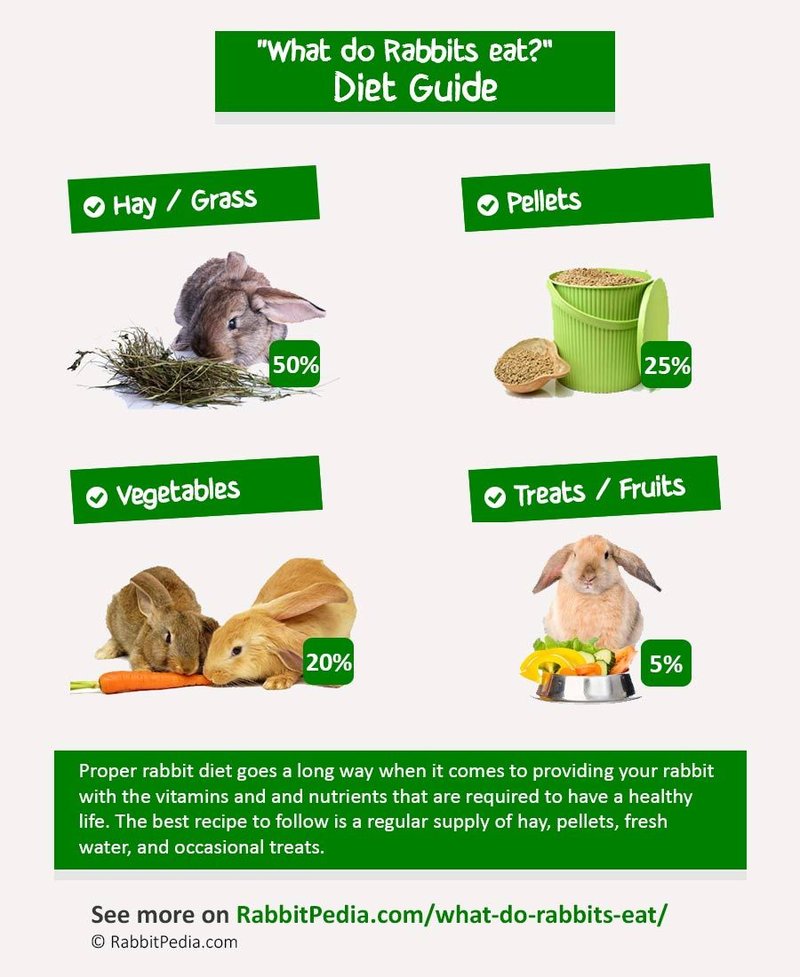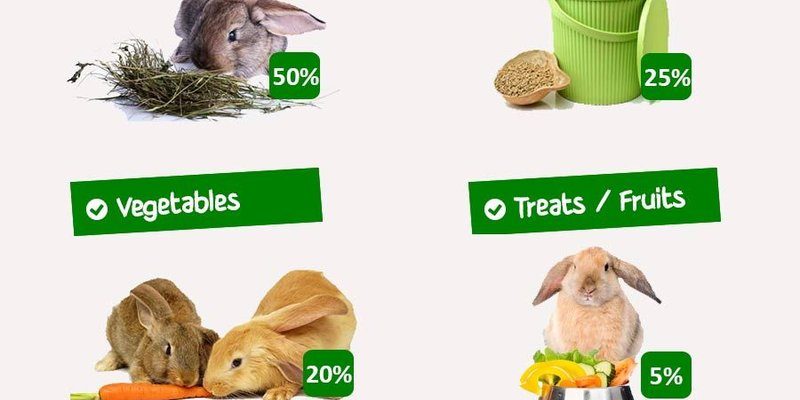
Imagine thinking of a rabbit’s diet like a well-balanced meal plan. You wouldn’t fill your plate with just one food, right? Rabbits need a variety of foods to maintain their health—much like you would enjoy a colorful plate of fruits, vegetables, and grains. In this guide, I’ll break down everything you need to know about rabbits’ dietary needs, so you’ll feel confident in providing the best food for your hopping companion.
The Basics of a Rabbit’s Diet
To start, let’s talk about what’s essential in a rabbit’s diet. Rabbits are herbivores, meaning they primarily eat plants. The cornerstone of their diet should be hay, which is rich in fiber. Hay isn’t just a nice snack; it’s crucial for their digestive health. Think of it as the bread and butter of their meals. You can offer different types of hay, like timothy, orchard grass, or meadow hay. Each type provides unique nutrients, but they’re all high in fiber.
Another important part of their diet is fresh vegetables. Leafy greens like romaine lettuce, kale, and cilantro are excellent choices. Just like you’d enjoy a salad, rabbits do too! However, not all veggies are safe. Avoid starchy vegetables like potatoes or high-sugar items like corn. A good rule of thumb is to introduce new greens gradually, allowing your furry friend to adjust.
And let’s not forget about pellets. These are specially formulated with a balanced mix of nutrients, but they shouldn’t be the main focus. Choose high-quality pellets that are made primarily from hay. Offering too many pellets can lead to obesity and other health issues. So, while they can be a part of the diet, they shouldn’t be the entire meal.
Understanding Hay: The Rabbit Superfood
When we say hay is essential for rabbits, we mean it! Hay serves as the foundation of a rabbit’s diet, supporting their digestive system and keeping their teeth healthy. Rabbits continuously grow their teeth, and chewing on hay helps wear them down. This is vital since overgrown teeth can cause serious health problems.
There are several types of hay, but the most common ones are timothy and orchard grass. Timothy hay is great for adult rabbits because it has a good balance of fiber and protein. On the other hand, orchard grass is softer and easier for young or elderly rabbits to chew. You might find your bunny prefers one over the other, so don’t hesitate to experiment a bit.
And how much hay should you offer? As a general guideline, a rabbit should have unlimited access to hay throughout the day. It’s like giving your best friend a never-ending supply of their favorite snack! Ensuring they have enough hay will keep them satisfied and healthy.
The Role of Fresh Vegetables in a Rabbit’s Diet
Fresh vegetables are the fun part of a rabbit’s diet! While hay is the staple, veggies provide essential vitamins and minerals. Think of it as adding color to your plate. When introducing veggies, start with a small amount and gradually increase the quantity to avoid digestive upset.
Some great choices include:
- Romaine lettuce – A hydrating leafy green that rabbits love.
- Cilantro – This herb is a favorite for many bunnies.
- Carrots – While they’re famous for this treat, they should be offered in moderation due to their sugar content.
- Bell peppers – They come in various colors and are packed with vitamin C.
You might be wondering which veggies to avoid. Some common ones include iceberg lettuce, potatoes, and onions. These can either be harmful or offer little nutritional value. When in doubt, a quick search can help you identify safe options!
Choosing Treats for Your Bunny
Treats can be a great way to bond with your rabbit and make them feel special. However, here’s the thing: treats should only be given in moderation. Too many can lead to health issues, like obesity or gastrointestinal troubles.
Safe treats typically include small amounts of fruits like apples, bananas, or berries. Just remember, these are high in sugar, so think of them as dessert! Offering a tiny piece occasionally can make your rabbit’s day. Some commercial treats are available, but always check that they’re made specifically for rabbits and don’t contain harmful additives.
A fun way to give treats is to use them during training! You can teach your bunny simple commands and reward them with a snack when they get it right. This not only stimulates their mind but also strengthens your bond.
Feeding Schedule: How Often to Feed
Establishing a feeding schedule is essential for keeping your rabbit on track. As a rule of thumb, rabbits should have access to hay at all times. You can offer fresh veggies daily, but aim for a 1-2 cup serving (depending on the size of your rabbit). For pellets, a small amount—around 1/4 cup for a full-sized rabbit—should suffice.
In terms of timing, many rabbit owners find it helpful to keep a consistent feeding routine. For example, you might feed your rabbit fresh veggies in the morning and provide pellets in the evening. This can create a comforting rhythm for your bunny. Just like us, rabbits appreciate routine!
You might also be wondering about water. Fresh, clean water should always be available. You can use a water bowl or a sippy bottle, depending on what your rabbit prefers. Keeping them hydrated is a big part of maintaining their overall health.
Signs of a Healthy Diet
So, how do you know if your rabbit is thriving on their diet? Observing their behavior and bathroom habits can tell you a lot. A healthy rabbit is active, curious, and has a shiny coat. They should be eating regularly and producing a steady amount of droppings—these should be small, round, and firm.
If your rabbit is lethargic, has a dull coat, or isn’t eating much, it might be time to tweak their diet or consult a vet. It’s crucial to catch any issues early since rabbits can be sensitive to changes in their diet.
Another good practice is to monitor their weight. If you notice any drastic changes, consider re-evaluating their food intake. You want to ensure they’re not too chunky or too thin.
Feeding rabbits may seem simple, but getting it just right is key to keeping your furry friend happy and healthy. Remember, a balanced diet includes plenty of hay, fresh veggies, and moderated treats. By establishing a consistent feeding schedule and keeping an eye on their health, you’ll ensure your rabbit lives its best life. Just like you, your bunny deserves the best when it comes to nutrition!
Now, equipped with this knowledge, you’re ready to take on the delightful journey of rabbit care. With the right food and a little TLC, you’re not just feeding a pet; you’re nurturing a friend. Happy feeding!

